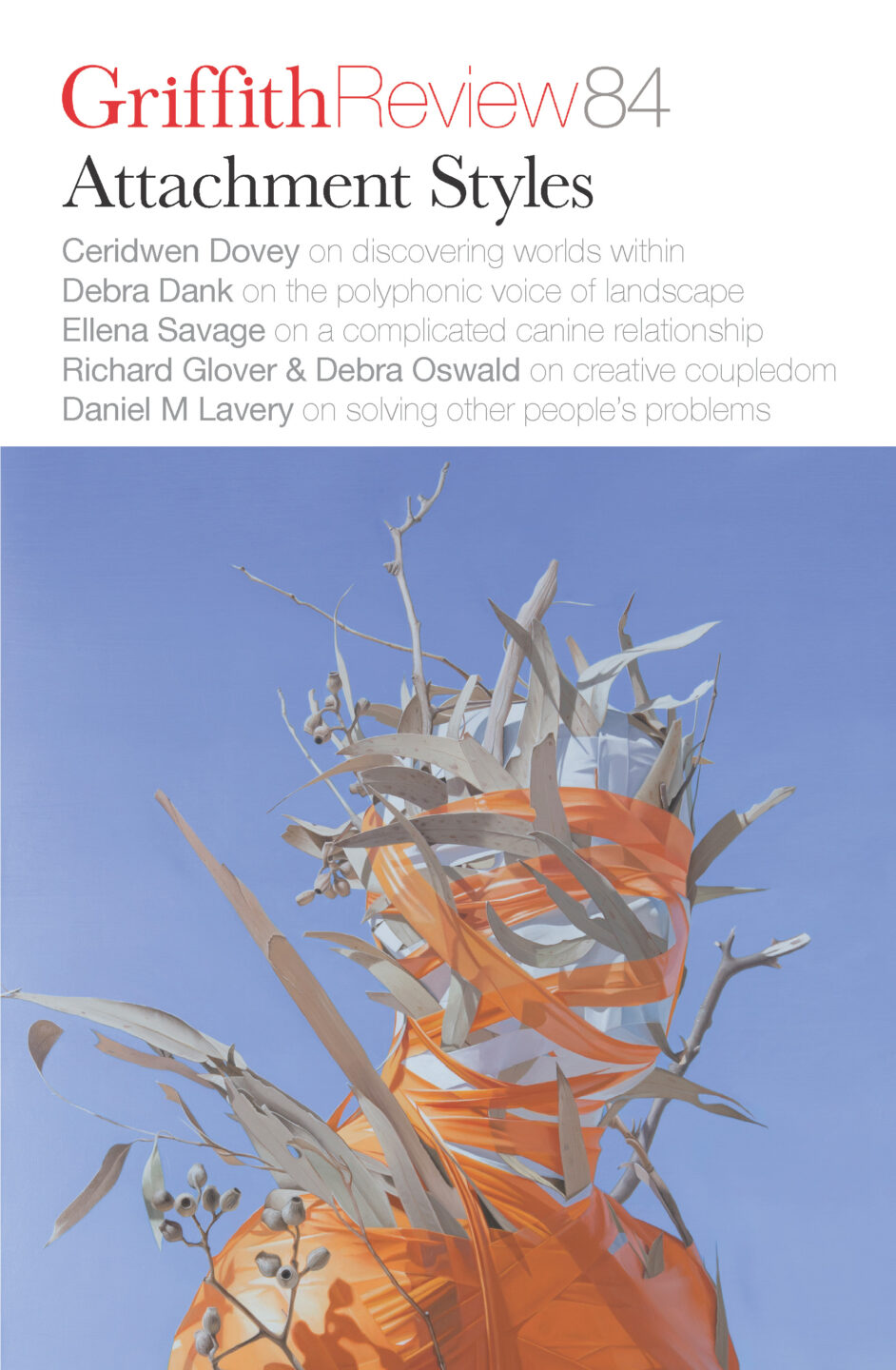Featured in

- Published 20240507
- ISBN: 978-1-922212-95-5
- Extent: 203pp
- Paperback, ePub, PDF, Kindle compatible


Already a subscriber? Sign in here
If you are an educator or student wishing to access content for study purposes please contact us at griffithreview@griffith.edu.au
Share article
About the author

Ellena Savage
Ellena Savage’s debut essay collection, Blueberries, was shortlisted for the 2021 Victorian Premier’s Literary Award and longlisted for the Stella Prize. Her essays and...
More from this edition

Psychobabble
Non-fiction ONCE, ON A first date, a man asked me if I knew about attachment styles. He caught himself before he finished the sentence and...

Lincoln Wimbley writes a story at 37,000 feet
FictionThen last week, in that bar. Lincoln never a big bar guy. But Professor Tim suggested, ‘Get out in the world!’ Somewhere all new. So, a bar. The bartender asked, ‘A beer?’ Lincoln hated cans. Hated bottles. Hated beer. But asked for something on draft. On tap. Explained why he was there, a first-timer, hunting for a story. Bartender laughed. Said elsewhere’s probably best. ‘None of the sad sacks here come with a happy ending.’

For my ex (an unforgiving poem)
Poetry Trust me when I wished you an eventful summer by which I meant processing yourself like a tardy Microsoft update You will have my blessing. Trust me about...